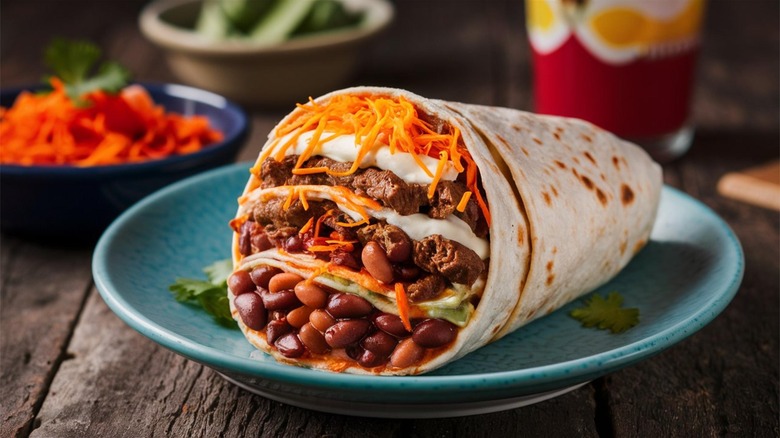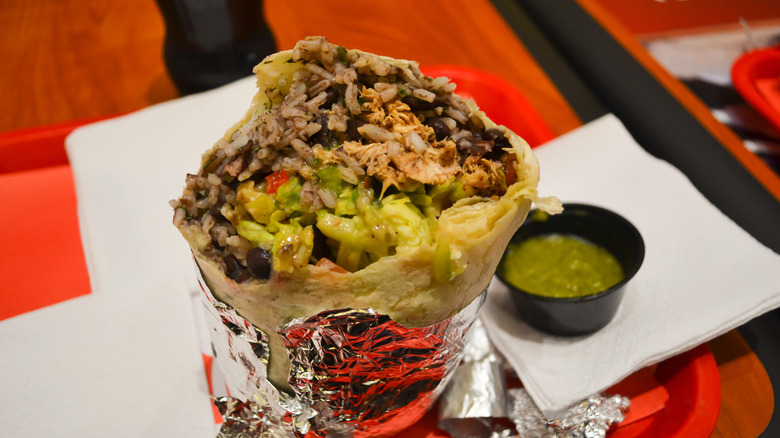Reheat Your Burrito In The Air Fryer For The Crispiest Result
Ditch the microwave and do justice to your leftover bean burrito by reheating it in an air fryer. This breezy move will elicit the crispiest result on the outside and give rise to a melty center. But the key to reheating your 'rito right? Do it in two stages.
First, wrap your burrito in foil before placing it in your air fryer, making sure that there's plenty of space around it for the air to circulate freely (if warming several burritos at once, space them well apart). This will prevent it from unraveling and trap some steam inside the foil package so the tortilla can soften, without crisping up and burning prematurely as the filling heats. If you're reheating a frozen burrito, air fry it in foil at 400 degrees for about 10 minutes to allow the center to defrost and heat through fully while the cheese melts. Bear in mind that if you're reheating a chilled burrito that's been sitting in the fridge, it will cook faster than a frozen one, but this can vary depending on its size and the density of the filling.
Secondly, remove the foil and place your burrito back in the air fryer seam side down for a couple more minutes or so to allow it to crisp up. The hot air will guarantee an even, crispy finish across the entire surface area of the tortilla, lending it heaps of texture and flavor. However, if you prefer a soft-style burrito, simply skip this step.
Reheating burritos in the air fryer vs the oven
While it's perfectly agreeable to heat your burrito in the oven, it's more convenient to use an air fryer. A small air fryer is quicker to preheat than a large capacity oven, cooks food faster, and uses less energy overall, which saves you money and time. These nifty appliances also circulate air around the entirety of their internal chamber, unlike conventional ovens that don't have a fan system, cooking your food more evenly.
Using a microwave to reheat a burrito works as well, but it can result in a soggy exterior and a super-hot center that's tricky to eat without burning your tongue. Microwaves can also create uneven hot spots across the length of a burrito or overcook areas if left on for a minute too long, making their texture chewy and unpalatable. A hot skillet is a great option if you like your burrito to have a crispy edge, but you can run the risk of it burning on the outside before the inside has warmed through. However, a quick wrap in foil and a short burst in an air fryer eliminates all of these issues resulting in a burrito that's invitingly melty in the middle and crisp on the outside.

